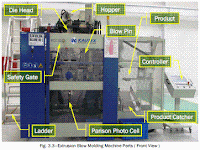When one object such as a shaft is assembled to another by forcing it into a hole that is slightly too small, the operation is known as press fitting. Press fits can be designed between similar plastics, dissimilar plastics, or more commonly between a plastic and a metal. A typical example occurs when a plastics hub in the form of a control knob or gear is pressed on a metal shaft. The position is reversed when a plastics sleeve or bearing is pressed into a metal bore.
Press fits are simple and inexpensive but there are some problems to look out for. The degree of interference between the shaft and the hole is critical. If it is too small, the joint is insecure. If it is too great, the joint is difficult to assemble and the material will be over-stressed. Unlike a snap fit, the press fit remains permanently stressed and it is the elastic deformation of the plastics part that supplies the force to hold the joint together.
When plastics materials are exposed to permanent stress the result is creep. This means that as time goes by, the force exerted by the press fit becomes less, lthough not necessarily to a significant extent.
There are two other pitfalls for press fits. Manufacturing tolerances on the shaft and hole must be taken into account to see whether the two extreme cases remain viable.
And when the joint is made between dissimilar materials, an increase in temperature will change the degree of interference between the parts. Remember too, that at elevated temperatures the effect of creep will be greater.
One way of countering the effect of creep in a shaft and hub press fit is to provide a straight medium knurl on the metal shaft.
The plastics hub material will tend to cold flow into the grooves of the knurl, giving a degree of mechanical interference between the parts. The frictional effect is also greater because the surface area of the joint has been increased by the knurl.
DESIGN GUIDES
for
PLASTICS
Clive Maier, Econology Ltd
Plastics Design Group - Plastics Consultancy Network
British Plastics Federation
pdg
plastics design group
December 2004 Edition






























